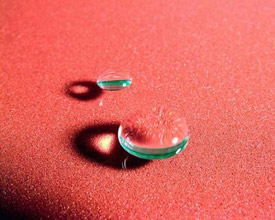By Keith McDowell
The innovation “bucket list” is replete with stories of
excitement and adventure as swashbuckling entrepreneurs with hair on fire swing
sparkling swords at the regulatory dragon and rescue the failing startup
company from the clutches of evil bankruptcy. Innovators and inventors alike
dazzle the timid with leaps of intuition and blazing glimpses into the not-so
obvious as open innovation springs forth as the latest and greatest weapon for
winning over the commercial marketplace.
It’s the twenty-first century innovation race to the top of
the global competitive pyramid with all hands called to the deck to fight the
good fight. But left in the galley below is a lowly steward toiling away with a
brush and bucket of paint hoping against hope to protect the rotting hull of
the ship against the ravages of time and knowing full well that the knights of
innovation no longer attend to the mundane. Watching paint dry has no appeal to
an active creative mind. Or does it? My good friend James Madison Bohannon
would take exception to those who would neglect the obvious.
Bo, as he is known to his childhood friends, has spent a
lifetime watching paint dry – or better said, observing, collecting data, and
testing the viability and efficacy of various paint and finish formulations on
every conceivable surface as part of his contribution to the coatings industry.
Now retired, Bo is one of the many unsung heroes of innovation who toil away
below the decks, out of sight and out of mind, on problems of seemingly little
interest to the innovation race.
Sadly, the exploits of such men and women have often been
deemed by the intellectual elite as of secondary importance, part of a caste
system where the presumptive best and brightest assume positions of prominence
in the world’s leading research universities and define what is to be while
supposed lesser minds are channeled into positions at industrial R&D
laboratories and, yes, community colleges. In some measure, much of the current
debate on how to bring the university and industry cultures together to foster
innovation hinges on removing such stereotyping. And stereotyping is just what
it is – an activity of one-dimensional, lesser minds.
But the times are changing as the putative caste system
undergoes stress from the forces of global competition and both the university
and industry cultures adapt to the need for community engagement to attack
grand challenges in a connected social network. Indeed, we need the full
spectrum of all such people with their differing skills and their different
agendas if continuing success is to be maintained.
And what about the paint and coatings industry? Have we
truly forgotten that some of our most clever inventors and innovators over the
centuries were artists searching for a new pigment to bring forth a new vision
and representation of reality on their canvass?
I recall well a visit to the Burlington-Northern-Santa-Fe Railroad
headquarters in Fort Worth, Texas, over a decade ago and participating in a discussion
about using nano-paint on railroad car wheels to search for stress fractures in
the wheels before they blew apart and caused a train accident. And later,
scientists at the Pawtucket Naval Air Station were engaged in a similar effort
with nano-paints hoping to find micro-fractures in the skin of naval aircraft
subjected to the salty ocean air and the stress of carrier landings. Who says
watching paint dry can’t be fun?
Not to be outdone, the automobile
industry touts nanopaint as a new way to add luster, depth, and the
shifting of color to the appearance of new cars. Warplanes become invisible to radar and
new nano-coatings
paint a green future. Even the wall paint of old gets a new
look. Who would have thought that so much could emerge from watching paint dry!
Hmmm, maybe we should all take a few moments to watch the grass grow. Who knows
what we might learn and what new inventions await us!

No comments:
Post a Comment